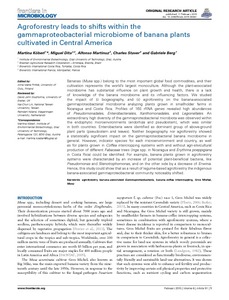Agroforestry leads to shifts within the gammaproteobacterial microbiome of banana plants cultivated in Central America
Bananas (Musa spp.) belong to the most important global food commodities, and their cultivation represents the world's largest monoculture. Although the plant-associated microbiome has substantial influence on plant growth and health, there is a lack of knowledge of the banana microbiome and its influencing factors. We studied the impact of (i) biogeography, and (ii) agroforestry on the banana-associated gammaproteobacterial microbiome analyzing plants grown in smallholder farms in Nicaragua and Costa Rica.










